Sales Territory Optimization Hacks for Sales Teams

There are four primary steps to consider with designing, balancing, and optimizing sales territory alignments.
- Get the building blocks right
- Focus on balance
- Refine and adopt
- Execute
This article highlights critical hacks sales operations leaders take to drive superior alignment designs.
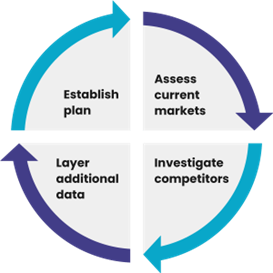
Get Your Building Blocks Right
When you build your territories, start from the ground up. Your math always works better with this approach. For example, you have 116,000 possible results with four regions, 20 zips, and a ground-up design. A top-down approach delivers only 180 outcomes. With the right territory alignment software, sophisticated algorithms will do the hard work for you – but the effect is striking in terms of alignment quality.
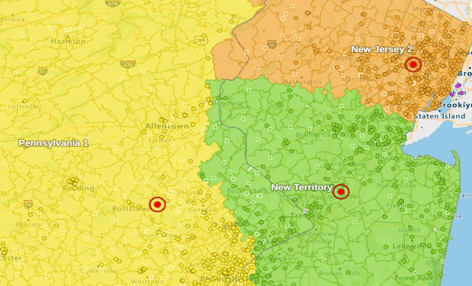
Build Territories Around Customers
In short, great territories start with customers. And remember, your customers stay longer than your reps. So, building territories around rep locations can work, but the long-term impact can be harmful. After they leave, what do you do?
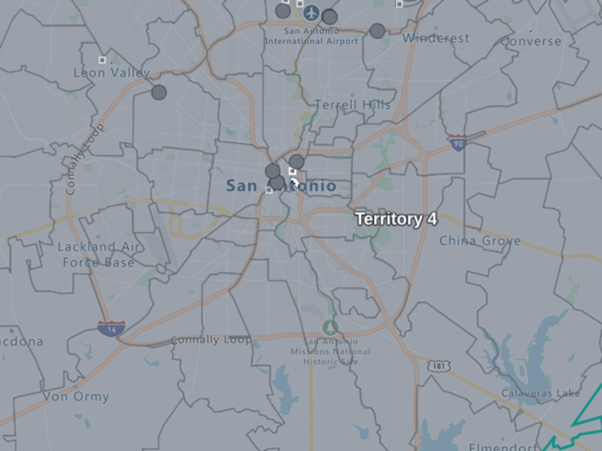
Use Postcode Boundaries (Zip Codes in the U.S.)
You have options. You can build sales territories on state, zips, or accounts (point-base). Those of you with larger sales teams will need more granular approaches. Why not counties? County-based sales territories can skew results. For example, most U.S. counties have a population of less than 1 million, but there are also outliers like LA County, which has 10 million people.
So we recommend you focus on zip- or postcode-level alignments. There are two main advantages:
- Lead assignment is automated easily. When you assign a rep to a zip, you eliminate guesswork.
- More granular design using zips reduces administration and management time.
Calculate for Rep Travel Time
Your reps will have a defined account mix. But are they all serviceable? Does your representative have the capacity (time) to service them efficiently and effectively?
Designing sales territories with equal sales potential is negated if it is not practical for someone to cover the area effectively. If your sales rep in Manhattan has a sales potential of $5,000,000 and shares the same goal as your rep in Oregon, you are designing a mismatch. That example is extreme, but the reality is that many reps’ territories are designed to reward the rep (like Manhattan).
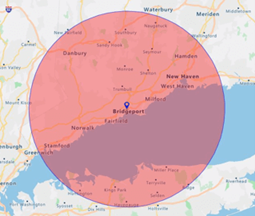 |
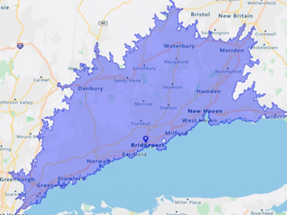 |
Balance
So, if we take the travel time example a step forward, always balance your alignments – ensuring you give each rep an equal workload or sales opportunity.
Maximize rep utilization, designing for:
- The same number of workload in hours
- The optimal number of reps
- Ideal location for your reps
Future Proof Your Sales Territories
Build territories on future sales potential. Avoid the trap of building sales territories on historical sales. Your marketplace is too dynamic for that approach. Focus on where you locate your future growth locations and customer growth hotspots. And build alignments to exploit your future sales potential.
Imperfections Are Beautiful
Don’t expect everything to be perfect. There can be legitimate reasons for imbalance.
Sales territory management is a science and an art; your goal is not perfection. For example, you have a new hire with little sales experience. You may want to onboard and train the rep and allocate them a sales territory with 80% of the average workload or sales potential as a start. And that’s OK.

It’s a Planning Process
There are outliers in every alignment. Some territories will have larger workloads or travel times; others will have more sales potential. Larger alignment projects involving hundreds of sales reps will balance out. So your overall alignment design will result in your desired outcome.
Tweak and Adopt
Great! You have your well-designed territories. Time to roll them out? Not yet. You need to accept tweaks and changes. Customers merge or get acquired. Sales reps leave. All will impact your designs, so prepare yourself for updates.
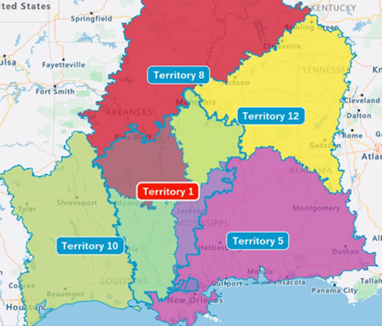
Involve Your Sales Managers
Sales territory management software is an enabler. It offers you state-of-the-art data-backed recommendations. But local knowledge is vital to optimal results. That is why you start with the software.
We recommend you always engage sales managers after you have optimized alignments. You get to the optimal design faster by presenting great territories first. Your sales managers can offer input from a fresh perspective, limiting pushback. They see the data-backed recommendations and feed their local knowledge into your process. For example, you may need account exceptions. Some sales reps should retain ownership of accounts in other territories, as it makes commercial sense to maintain strong customer relationships.
Have a Well-Defined Approval Process
You are almost there. You have well-designed sales territories that are data backed and sense checked by your sales managers. Now you need a defined approval process. You have different roles affected by these changes:
- Sales managers
- Sales reps
- HR
- Operations
We recommend you have a different review and approval process for each. It leads to:
- Faster decisions
- Better quality feedback
Execution
We may be stating the obvious, but we recommend first designing the territories (using the hacks above), then setting your quotas.
Start with the sales rep capacity or workload. Then align your territories to an agreed workload balance or weighting. When you have completed this stage, you can set your sales quotas.
Your sales reps want to know:
- What’s my territory?
- What’s my quota?
- What’s my comp plan?
You create a funnel that leads to the quota and the compensation planning by starting with the territory. It transforms your execution process.
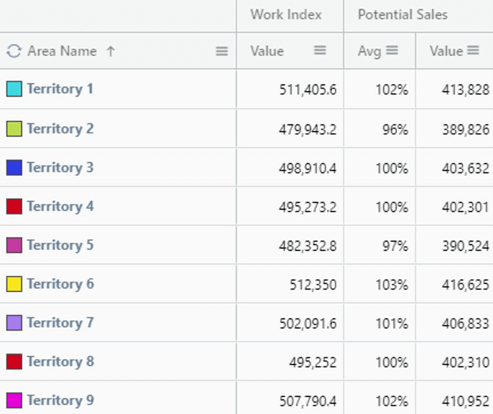
Be Transparent
Be clear on your sales territory design method. Share the information your key stakeholders care about:
- Details on accounts allocated to each territory
- Reports showing your workload calculations or weighting criteria used to design territories
- Your methodology for designing territories
- Territory sales potential and how you calculated the numbers
The clearer you are about how and why your sales territory designs are, the quicker you get engagement and adoption to your new plans.
Give Your Reps the Right Productivity Tools
You have optimized sales territories, but are your sales reps planning their days effectively? Route optimization and trip planning tools can dramatically increase selling time while reducing windshield time. That means greater sales rep utilization. Sales reps can optimize a selling day by adding one extra call per day. If you have 500 sales reps, that’s 500 additional sales calls per day – 2,500 per week. That is a seismic shift in sales productivity and revenue generation.
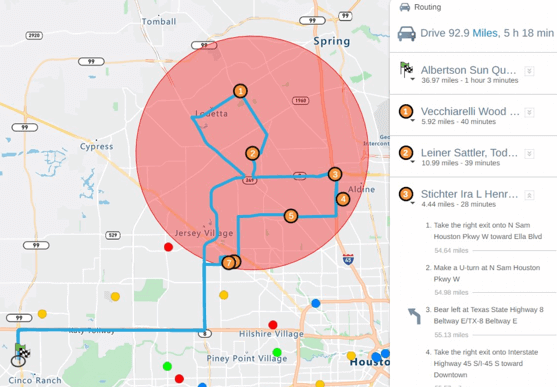
Analyze, Rinse, and Repeat
Your first alignment project is your most significant. But it is not your last. I know you want it all to end, but your marketplace and business requirements ensure it is a never-ending process. Your sales territory alignment and routing optimization software use sophisticated algorithms. And they do 90% of your heavy lifting. But ongoing assessment is vital.
You will constantly ask yourself, “Why are some territories over- or under-performing?” – and taking proactive corrective action. You don’t wait until you miss your numbers to realign under-performing territories. It is an active, not reactive, process.
In Summary, There Are Four Primary Areas of Focus
- Get your building blocks right
- Focus on balance
- Refine and adopt
- Execute
Use data-backed insights and align them with key stakeholder feedback. Focus on your customer locations, not your rep’s address. Use a weighting like a workload to perfect your alignments. Involve your sales managers after you have created your optimized sales territories. Build a repeatable design and approval process.
View your process as a continuous improvement project. Analyze your recommendations against the actual sales plan achievement. And quickly rectify issues with your alignments.
Ken Kramer is the VP of North America for eSpatial.
Get our Enewsletter
Get the latest sales leadership insight, strategies, and best practices delivered weekly to your inbox.
Sign up NOW →